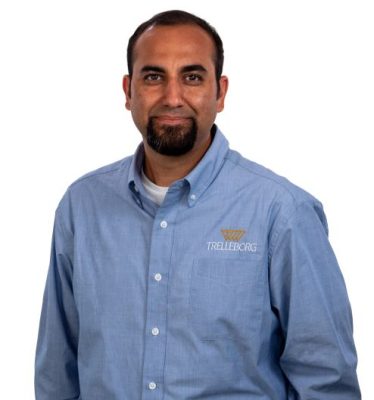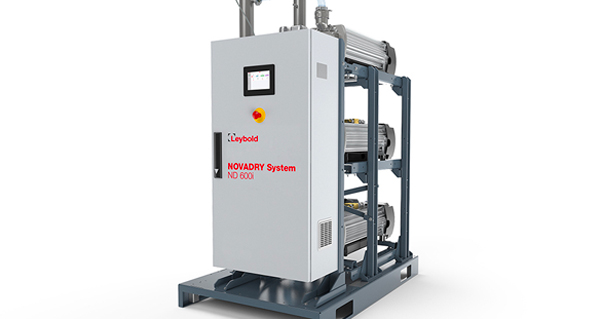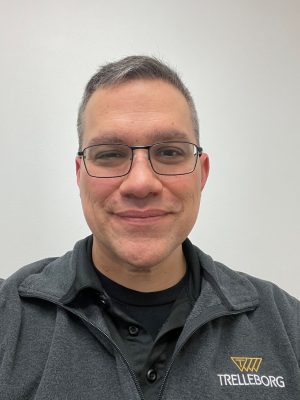Enhancing Hydraulic System Reliability

Robert Sheaf
Key Design Considerations and the Importance of Fluid Power Training
By Robert Sheaf, Senior Consultant, CFC Industrial Training
As an instructor and troubleshooter of fluid power systems, I’ve found that so many hydraulic systems can be designed and built in a manner that would extend their life and incur fewer problems along the way. This is true starting from the actuator and moving down to the reservoir. Training in fluid power is so desperately needed in our industry. So many of my service calls were resolved using simple solutions, and users often lacked the knowledge of what caused the problem. The following are several suggestions designers and users should seriously consider.
Actuators with case drains extend shaft seal life and are a great tool for determining the condition of the mechanical internals. Cylinder rod seals’ most common failure is due to external contamination and intensified pressure, caused by metering out the flow on the rod end. Rod boots and using meter-in flow controls on the cap end with a counterbalance valve on the rod side, instead of meter-out flow control, reduces this problem. “Meter out when in doubt but watch out” is a favorite saying of mine as a reminder of this problem. Also, a cylinder and its rod side hose must be designed based on potential intensification pressures and not the system’s main pump relief valve or compensator setting.
Pumps with properly sized intake lines mounted alongside or under the reservoir reduce cavitation damage and noise levels. Pressure-compensated pumps’ noise levels get louder as the pressure increases and quieter as they reach the pumps’ maximum compensator setting. If a pump’s intake is located 1m (3 feet) below the fluid level, it would have a pressure of 8.3 kPa (1.2 psig). Mounted on top of a reservoir with intake 0.6m (2 feet) above the fluid level, a 41 mm (1.6”) hg pressure would occur. Vane and gear pumps rotated at 1200 rpm instead of 1800 are quieter and experience extended life.
Reservoirs built with an “L” shape design using tall and skinny sides dissipate more heat to the ambient air and improve pump intake conditions. With water being the major system contaminant, filler breathers should be used with a water rejection element. Air moisture flowing into a reservoir is rejected, while moisture already in the reservoir is allowed to pass through the filter element as air leaves the opposite direction. This lowers the relative humidity in the reservoir. Return filters with electrical or visual indicators should be used so their elements are only replaced as needed.
When I used to operate a hydraulic repair shop, we received pumps for repair. It was surprising how many appeared to be operational when disassembled. When we contacted the customer and asked why they sent us the pump, they responded that their system had lost its pressure. Remember, a pump’s job is to provide flow and cannot cause pressure. Think of a pump outlet flowing directly back to the tank with a 2000 psi gauge connected to it. Would it indicate any readable PSI other than what it takes to push the flow through the plumbing? Often, the customer just had a pilot-operated pressure control with nothing more than a blocked control orifice. I explained in these instances how a control orifice worked and how it caused a lack of pressure problem.
I encourage anyone interested in furthering themselves in the fluid power industry to get involved with the IFPS. They should start certifying at the mechanic level and work their way up to as high as they are capable. When they are interested and have a fluid power schoolbook, I tell them to study the chapters on schematic reading and pressure controls. These two items were a great help to me at the start of my fluid power career. I joined the IFPS back in the late 80s and it was one of the best career moves I made to further my industry knowledge.
As an added final note, I want to thank all those who nominated me in the past for consideration as a new member of the IFPS Hall of Fame. At the time, I owned a fluid power-oriented training business with no college degree and felt uncomfortable accepting the nomination. However, when I retired and sold my company, the new owners insisted as part of their sell agreement that I accept the honor if I was nominated and elected. Thanks again to all those who voted and supported my election. Much to my surprise, my six children, their families, my brother, and several grandsons were there at the annual IFPS meeting in Kansas City to congratulate me on my induction into the Hall of Fame.







